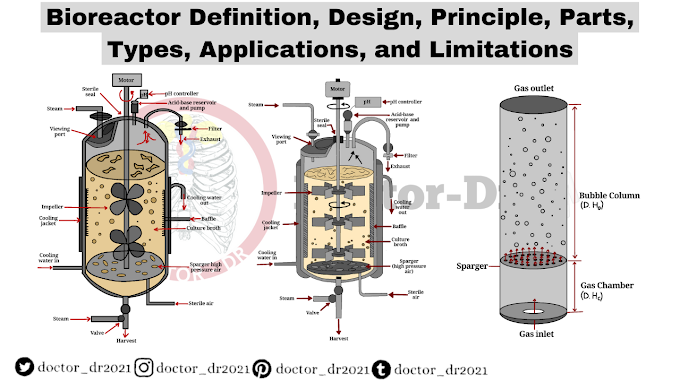Table of Contents
- Introduction to ATAC-Seq
- History of ATAC-Seq
- Principle of ATAC-Seq
- Steps of ATAC-Seq
- Advantages of ATAC-Seq
- Limitations of ATAC-Seq
- Applications of ATAC-Seq
- Single-cell ATAC-Seq
- References
Introduction to Assay for Transposase-Accessible Chromatin using Sequencing
- ATAC-Seq (Assay for Transposase-Accessible Chromatin using Sequencing) is a method used to study chromatin accessibility and gene regulation.
- This method identifies open chromatin regions where regulatory proteins can bind.
- It provides information about how DNA is packaged within the nucleus.
- ATAC-Seq helps us understand how chromatin structure can influence gene expression.
- DNA is organized into three hierarchical structures: nucleosomes, chromatin, and chromosomes.
- Chromatin exists in two dynamic states and can transition between transcriptionally active euchromatin (open) and inactive heterochromatin (closed).
- Different sequencing methods have been developed to study chromatin accessibility and epigenetic modifications.
- Open chromatin regions are usually linked to active genes and transcription factor binding.
- Studying chromatin structure is important because it plays key roles in gene regulation.
- These methods include DNase-Seq (DNase I hypersensitive sites sequencing), FAIRE-Seq (Formaldehyde-Assisted Isolation of Regulatory Elements sequencing), ChIP-Seq (Chromatin Immuno-Precipitation sequencing), and MNase-Seq (Micrococcal Nuclease sequencing).
- Among these methods, ATAC-Seq has become widely used in epigenomics due to its efficiency and minimal input requirements compared to traditional methods.
- ATAC-Seq has a simple workflow.
- It requires a small number of cells.
- It provides detailed information about regulatory elements.
- Since its introduction, ATAC-Seq has been used in different biological fields like disease research, epigenetics, and cancer studies.
History of ATAC-Seq
- ATAC-Seq was introduced in 2013 by Jason Buenrostro and his team at Stanford University.
- Earlier epigenetic methods like DNase-Seq and FAIRE-Seq required large amounts of starting material.
- These earlier methods had complex protocols.
- They could not analyze all three chromatin features simultaneously in a single assay.
- ChIP-Seq also had limitations, as it required prior knowledge of the specific epigenetic mechanisms involved.
- To overcome these limitations, ATAC-Seq was developed as a simple and efficient method.
- ATAC-Seq requires far fewer cells compared to previous methods.
- It provides a genome-wide view of chromatin accessibility.
- This method has improved over time, leading to innovations such as single-cell ATAC-Seq.
- Single-cell ATAC-Seq helps study chromatin accessibility at the level of individual cells.
- Recent improvements combine ATAC-Seq with other techniques like RNA sequencing and DNA methylation analysis.
- These combinations provide more detailed information about gene regulation.
Principle of ATAC-Seq
- ATAC-Seq works by using an enzyme called Tn5 transposase that simultaneously cuts DNA and inserts sequencing adapters.
- This combined process is known as tagmentation or transposition.
- Tagmentation targets open chromatin regions.
- The Tn5 enzyme selectively inserts into accessible DNA.
- Sequencing the resulting fragments identifies open chromatin regions.
- These open regions are where genes can be accessed and regulated.
- ATAC-Seq has three main steps before sequencing: cell lysis, transposition, and amplification.
- In the first step, cell lysis isolates nuclei from the sample and prepares them for transposition.
- During transposition, the Tn5 enzyme cuts open chromatin regions and inserts sequencing adapters into these accessible regions.
- The tagged DNA fragments are then amplified.
- These fragments are prepared for high-throughput sequencing.
- The sequencing data is analyzed to identify regions of the genome that are open and accessible.
Steps of ATAC-Seq
Cell Preparation
- The first step in ATAC-seq is isolating and preparing cells for analysis.
- In this step, cells are harvested, counted, and lysed to obtain pure nuclei.
- It is important to maintain single-cell suspensions for accurate results.
- The cells are lysed using a lysis buffer.
- The lysis buffer breaks open the cells and releases their nuclei while keeping chromatin intact.
- After lysis, the cells are centrifuged.
- The cells are then washed to remove excess buffers.
Transposition
- The obtained chromatin is fragmented and tagged with sequencing adapters using the Tn5 transposase enzyme to create the ATAC-seq library.
- Tn5 cleaves the chromatin into smaller fragments.
- This process specifically targets open chromatin regions.
- After fragmentation and tagging, the library is purified.
- Purification removes excess transposase and contaminants.
Amplification
- The purified DNA fragments undergo PCR amplification to increase the quantity of DNA for sequencing.
- PCR amplification ensures there is enough DNA for high-throughput sequencing.
- The final DNA library can be checked for quality.
- Quality control methods include gel electrophoresis or fluorescence-based detection methods.
Sequencing
- The final ATAC-seq libraries are loaded into a sequencing machine.
- The most commonly used sequencing platform for ATAC-seq is Illumina.
- Paired-end sequencing is often preferred because it sequences both ends of the DNA fragments.
- Paired-end sequencing provides more information about fragment size and the location of accessible regions.
- Single-end sequencing can also be used.
- However, single-end sequencing provides less structural information and is less accurate.
Data Analysis
- ATAC-Seq data analysis consists of four main steps: pre-analysis, core analysis, advanced analysis, and multiomics integration.
- Pre-analysis involves quality control (QC) and sequence alignment.
- Pre-alignment QC checks the sequencing data for errors or unwanted adapter sequences.
- Tools like FastQC are used to check base quality, GC content, and repeated sequences.
- Trimmomatic is used to remove low-quality reads and adapter sequences.
- After trimming, the cleaned reads are aligned to the reference genome.
- Post-alignment QC filters out low-quality reads, removes duplicates, and checks fragment sizes.
- Core analysis includes peak calling which identifies open chromatin regions.
- Most peak callers for ATAC-seq are adapted from ChIP-seq or DNase-seq methods.
- HMMRATAC (Hidden Markov ModeleR for ATAC-seq) is the only peak caller specifically developed for ATAC-seq.
- Advanced analysis identifies four key patterns in the data: peak, motif, footprint, and nucleosome.
- It includes annotating peaks, detecting transcription factor motifs, identifying transcription factor footprints, and studying nucleosome positioning.
- ATAC-seq data can also be combined with other omics datasets to fully understand gene regulation.
- Multiomics integration enhances understanding by comparing ATAC-seq data with ChIP-seq to confirm binding sites.
- It uses RNA-seq to link chromatin accessibility with gene expression.
- It also aids in reconstructing regulatory networks.
Advantages of ATAC-Seq
- ATAC-Seq requires fewer cells, making it ideal for studying complex or rare samples.
- It has a simpler library preparation method, which makes it easier and faster to perform.
- It does not need prior knowledge of epigenetic mechanisms, unlike earlier methods.
- It has high sensitivity and can accurately detect open chromatin and regulatory elements at both the bulk and single-cell levels.
- It provides fast results, making it suitable for large-scale applications like clinical research and drug development.
- It can be used to understand diseases linked to epigenetic changes, including cancer, autoimmune diseases, and neurodegenerative disorders.
Limitations of ATAC-Seq
- ATAC-Seq only captures chromatin accessibility and does not provide information about DNA methylation, histone modifications, and chromosome interactions.
- The Tn5 transposase used in ATAC-seq can introduce bias in adapter ligation.
- Tn5 can sometimes insert the same adapter into both ends of a DNA fragment, resulting in unusable fragments for sequencing.
- This can lead to data loss and uneven coverage of the genome.
- The PCR amplification step can create challenges when dealing with large DNA fragments.
- ATAC-seq faces computational challenges as only a few bioinformatics tools have been developed specifically for ATAC-seq data.
- Researchers often rely on tools designed for ChIP-seq and DNase-seq for data analysis.
Applications of ATAC-Seq
- ATAC-Seq is primarily used to map open chromatin regions, enabling the study of genomic regions accessible for transcription.
- These maps help identify regulatory elements such as enhancers and promoters that play crucial roles in gene expression.
- It is extensively used to investigate gene regulation and transcription factor binding in various biological processes, including complex diseases, immune responses, and cancer.
- ATAC-Seq is also employed in nucleosome mapping to understand how chromatin structure influences gene activity.
- It has applications in cancer epigenetics, where it is used to explore chromatin accessibility changes in cancer cells.
- In disease research, ATAC-Seq helps map disease-specific chromatin alterations, identify regulatory elements linked to diseases, and uncover potential therapies targeting chromatin accessibility.
- The technique is also used in comparative epigenomics and evolutionary research.
Single-cell ATAC-Seq
Single-cell ATAC-Seq (scATAC-Seq) is an advanced variant of ATAC-seq that enables the study of chromatin accessibility at the level of individual cells.
- Unlike traditional ATAC-seq, which analyzes bulk cell populations, scATAC-seq provides insights into cell-to-cell differences in chromatin structure.
- It allows for the identification of chromatin accessibility in thousands of individual cells using a simple and cost-effective protocol.
- scATAC-Seq utilizes techniques such as fluorescence-activated cell sorting (FACS), microfluidics, and nano-well platforms to isolate and analyze individual cells.
- After isolating the cells, the ATAC-seq process is performed on each cell separately.
- By focusing on individual cells, scATAC-seq uncovers details that may be obscured in bulk ATAC-seq data, making it valuable for identifying rare or hidden cell types.
- It also helps in understanding how different cell types are regulated.
References
- Illumina. (n.d.). ATAC-SEQ for Chromatin Accessibility Analysis. Retrieved from https://www.illumina.com/techniques/multiomics/epigenetics/atac-seq-chromatin-accessibility.html
- CD Genomics. (n.d.). ATAC-SEQ: Comprehensive Guide to Chromatin Accessibility Profiling. Retrieved from https://www.cd-genomics.com/resource-atac-seq-comprehensive-guide.html
- Buenrostro, J. D., Wu, B., Chang, H. Y., & Greenleaf, W. J. (2015). ATAC-SEQ: A Method for Assaying Chromatin Accessibility Genome-Wide. Current Protocols in Molecular Biology, 109(1). https://doi.org/10.1002/0471142727.mb2129s109
- Active Motif. (n.d.). Complete Guide to Understanding and Using ATAC-SEQ. Retrieved from https://www.activemotif.com/blog-atac-seq
- CD Genomics. (n.d.). How to Interpret ATAC-Seq Data. Retrieved from https://www.cd-genomics.com/resource-how-to-interpret-atac-seq-data.html
- Luo, L., Gribskov, M., & Wang, S. (2022). Bibliometric Review of ATAC-Seq and Its Application in Gene Expression. Briefings in Bioinformatics, 23(3). https://doi.org/10.1093/bib/bbac061
- Ma, S., & Zhang, Y. (2020). Profiling Chromatin Regulatory Landscape: Insights into the Development of ChIP-seq and ATAC-seq. Molecular Biomedicine, 1(1). https://doi.org/10.1186/s43556-020-00009-w
- CD Genomics. (n.d.). Quality Control of ATAC Sequencing Library. Retrieved from https://www.cd-genomics.com/resource-quality-control-of-atac-sequencing-library.html
- Smith, J. P., & Sheffield, N. C. (2020). Analytical Approaches for ATAC-SEQ Data Analysis. Current Protocols in Human Genetics, 106(1). https://doi.org/10.1002/cphg.101
- Tjoonk, N. (2024, August 12). Exploring the Benefits and Limitations of ATAC-SEQ in Single Cells. Retrieved from https://www.scdiscoveries.com/blog/featured/atac-seq-for-single-cells-benefits-and-limitations/
- Yan, F., Powell, D. R., Curtis, D. J., & Wong, N. C. (2020). From Reads to Insight: A Hitchhiker’s Guide to ATAC-seq Data Analysis. Genome Biology, 21, 22. https://doi.org/10.1186/s13059-020-1929-3









